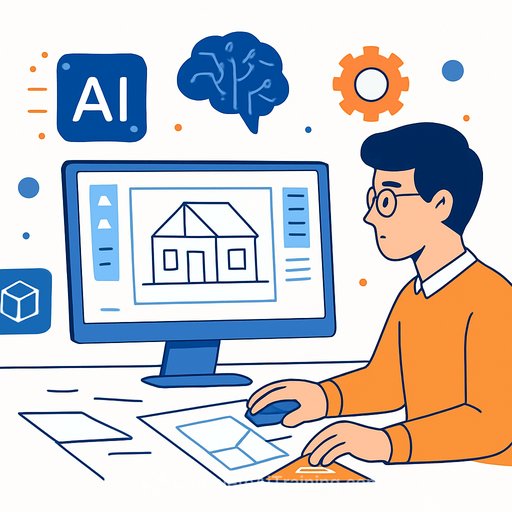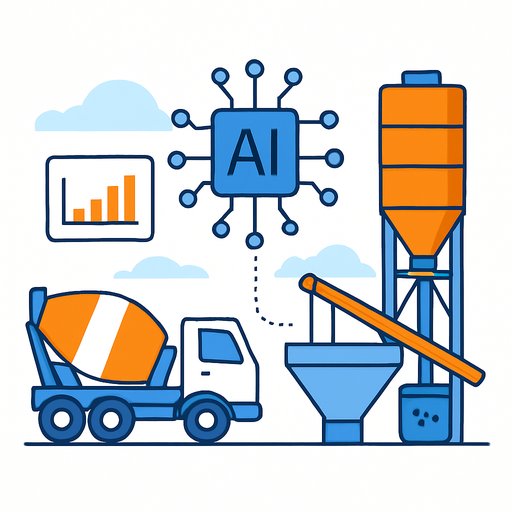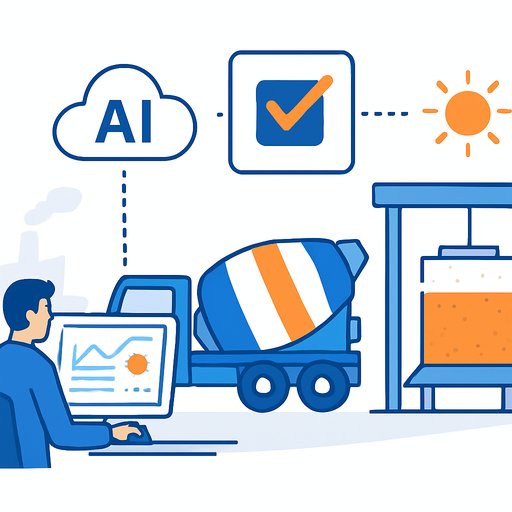10 Top AI Tools Transforming Architecture in 2025
If you work in real estate or construction, speed and certainty win deals. AI helps you get there-fewer iterations, tighter budgets, cleaner coordination, and faster buy-in from stakeholders.
Below are 10 practical tools teams are using right now. Use them to cut design cycles, de-risk feasibility, and keep the field aligned with the model.
1) Autodesk Forma (formerly Spacemaker)
Early-stage planning with AI-assisted massing, site studies, wind, daylight, and noise analysis. Ideal for developers and architects who need fast, data-backed options before committing capital.
- Use it for: Site yield, shadow/wind studies, early zoning checks
- Why it matters: Approvals move quicker when options come with data
- Where it fits: Pre-design and feasibility
2) TestFit
Instant site feasibility for housing, mixed-use, and parking. Adjust unit mix, setbacks, and parking ratios; get viable schemes in minutes.
- Use it for: Yield studies, parking layouts, pro forma conversations
- Why it matters: Fewer dead-end schemes, faster go/no-go
- Where it fits: Developer feasibility and early design
3) Hypar
Rules-based building generation with BIM outputs. Encode your standards once, generate many options that already follow them.
- Use it for: Core-and-shell logic, MEP layouts, standardized typologies
- Why it matters: Repeatable systems = predictable costs and timelines
- Where it fits: Concept to schematic, design automation
4) UpCodes Copilot
An AI code assistant trained on building codes. Ask questions in natural language and get citations you can verify.
- Use it for: Quick code checks, egress/occupancy questions, citations
- Why it matters: Cuts down on rework from missed code issues
- Where it fits: Design development and QA
5) Togal.AI
Automated takeoffs from plan PDFs. Finds areas, walls, and counts so estimators can review instead of tracing.
- Use it for: Conceptual and schematic takeoffs, bid-day speed
- Why it matters: More bids with the same team, higher accuracy
- Where it fits: Preconstruction and estimating
6) ALICE Technologies
Scenario-driven construction scheduling. Test build sequences, resources, and constraints; compare timelines and cost outcomes.
- Use it for: Schedule optimization, what-if planning, risk analysis
- Why it matters: Fewer surprises, smarter contingency
- Where it fits: Precon through execution planning
7) OpenSpace
360° site capture with AI that maps photos to your plans. Track progress, verify installs, and resolve disputes with time-stamped evidence.
- Use it for: Progress verification, pay apps, remote walkthroughs
- Why it matters: Less time on documentation, more time solving issues
- Where it fits: Construction monitoring and closeout
8) cove.tool
Early energy, carbon, and cost trade-offs. Compare envelope, HVAC, and glazing options with quick feedback.
- Use it for: Energy modeling lite, carbon targets, value engineering
- Why it matters: Makes sustainability choices measurable and fast
- Where it fits: Concept and schematic design
9) Maket AI
Rapid floor plans and code-aware layouts for residential and small commercial projects. Useful for feasibility and client conversations.
- Use it for: Space planning, zoning-informed studies, quick options
- Why it matters: Faster iterations before BIM handoff
- Where it fits: Early design and developer pitch decks
10) Veras by EvolveLAB
Concept images generated from your BIM views. Show direction fast without starting a full visualization pipeline.
- Use it for: Client buy-in, facade options, mood studies
- Why it matters: Visuals in hours instead of days
- Where it fits: Concept design and stakeholder reviews
How to pick the right tools (without slowing your team)
- Start where delays hurt most: Feasibility, estimating, or coordination
- Check interoperability: Revit/IFC support, Procore/BIM 360/ACC, Excel/CSV
- Protect data: Project-level permissions, SOC 2/ISO certifications, on/off cloud options
- Run a 30-60 day pilot: Baseline current process; measure time saved, RFIs reduced, or hit-rate on bids
- Adopt with SOPs: Document prompts, settings, and review steps so results are consistent
Field-tested stacks you can try
- Site feasibility: TestFit + Autodesk Forma for options, UpCodes Copilot for code checks
- Precon speed: Togal.AI for takeoffs + ALICE for schedule scenarios
- Design to client sign-off: Hypar for standards-driven options + Veras for visuals
- Jobsite visibility: OpenSpace for capture + your PM suite for issues and pay apps
Common pitfalls to avoid
- Unverified outputs: Always review AI results; treat them as first-pass work
- Tool sprawl: Standardize on a short list; train people well
- Bad inputs: Out-of-date plans or wrong zoning data will produce bad results faster
Next steps
Pick one high-friction workflow and run a pilot this quarter. Prove the time saved, then roll it out.
Want structured training for construction and real estate teams? Explore practical courses here: AI Courses by Job and Popular AI Tools.
Your membership also unlocks:






